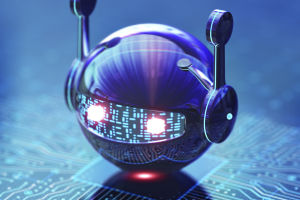Wind energy has emerged as a pivotal solution in the quest for sustainable and renewable power sources.
Central to this technology are wind turbines and wind generators.
While often used interchangeably, these terms represent distinct technologies with unique functions and applications.
This essay explores the differences between a wind turbine and a wind generator, focusing on their design, operation, and applications.
Definitions and Basic Functions
Wind Turbine:
A wind turbine is a device designed to convert kinetic energy from the wind into mechanical energy, which is then used to generate electrical power. Wind turbines consist of several key components: the rotor blades, the hub, the nacelle, and the tower.
The rotor blades are designed to capture the wind's energy, causing them to spin and turn the hub. This rotational motion is transferred to a generator within the nacelle, which converts the mechanical energy into electrical energy. Wind turbines are primarily used in large-scale wind farms to produce electricity for the grid.
Wind Generator:
The term "wind generator" often refers specifically to the generator component within a wind turbine. However, it can also be used to describe smaller-scale devices that generate electrical power from wind energy. These devices are typically referred to as small wind turbines or micro-wind generators.
A wind generator, in this context, refers to the technology responsible for converting the mechanical energy from the wind into electrical energy. It consists of an electromagnetic coil and magnets that interact to produce electricity when the rotor blades turn.
Design and Structure
Wind Turbine:
Wind turbines are designed for large-scale energy production and are characterized by their size and complexity. The primary components include:
Rotor Blades: These blades are aerodynamically designed to maximize wind capture and are usually made from composite materials.
Hub: The hub connects the rotor blades to the main shaft and is responsible for transferring rotational energy.
Nacelle: The nacelle houses the generator and other critical components, including the gearbox and control systems.
Tower: The tower elevates the turbine to capture stronger and more consistent winds at higher altitudes.
Wind turbines come in various sizes, from small residential units to massive commercial turbines capable of producing several megawatts of electricity.
Wind Generator:
In contrast, a wind generator, especially in smaller applications, is simpler and less substantial. Its design includes:
Rotor: The rotor, which may be a part of the wind turbine or a standalone component, captures wind energy.
Generator: The generator within the system converts mechanical energy into electrical energy using electromagnetic principles. In small wind generators, this component is compact and designed for efficiency in lower wind speeds.
Smaller wind generators often have fewer components and simpler designs compared to large wind turbines, making them suitable for residential or small-scale applications.
Applications and Efficiency
Wind Turbine:
Wind turbines are primarily used in utility-scale wind farms and are designed to produce significant amounts of electricity. They are installed in areas with consistent and high wind speeds to maximize energy production.
Wind turbines can be found in onshore and offshore installations and are integral to large-scale renewable energy strategies. Their efficiency is influenced by factors such as wind speed, blade design, and turbine maintenance.
Wind Generator:
Wind generators, particularly in the form of small or micro-wind turbines, are used for individual or community power needs. They are ideal for locations with lower wind speeds or where space is limited.
Applications include powering homes, agricultural operations, and small businesses. While their energy output is significantly less than that of large wind turbines, they provide valuable power in situations where larger systems are impractical.


